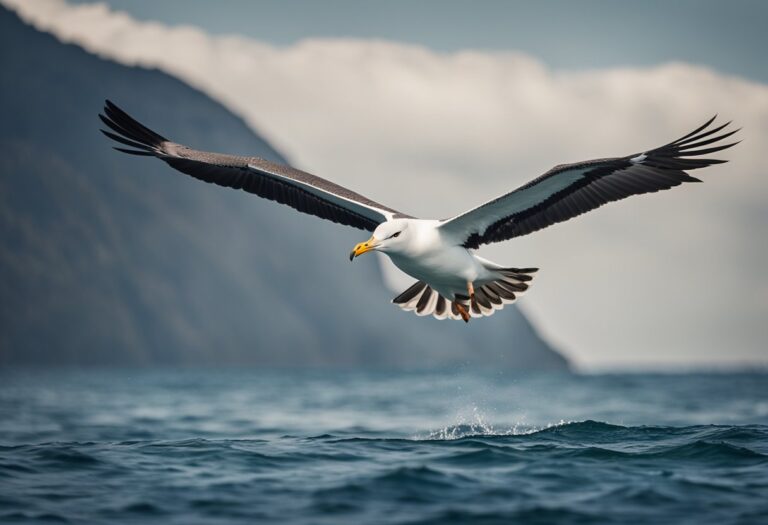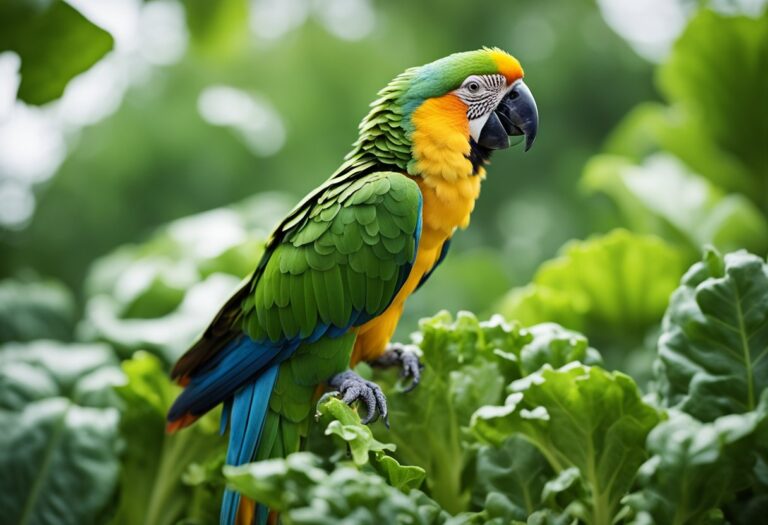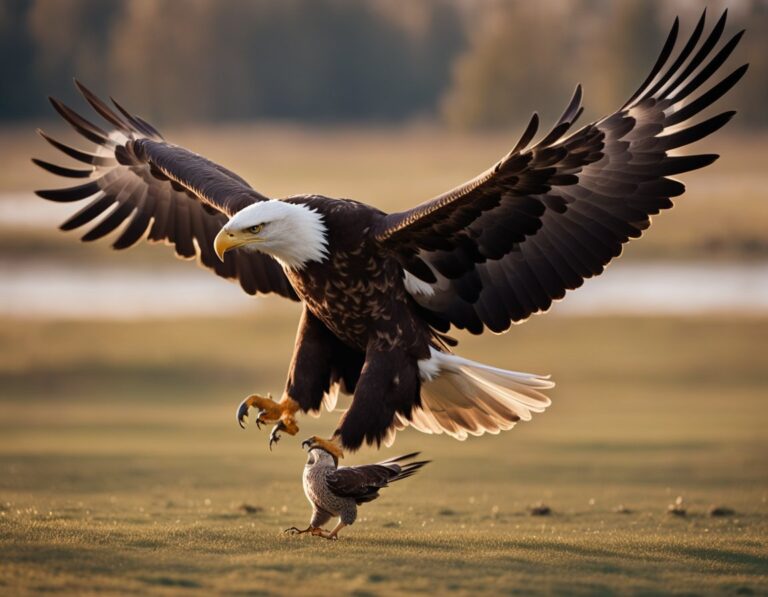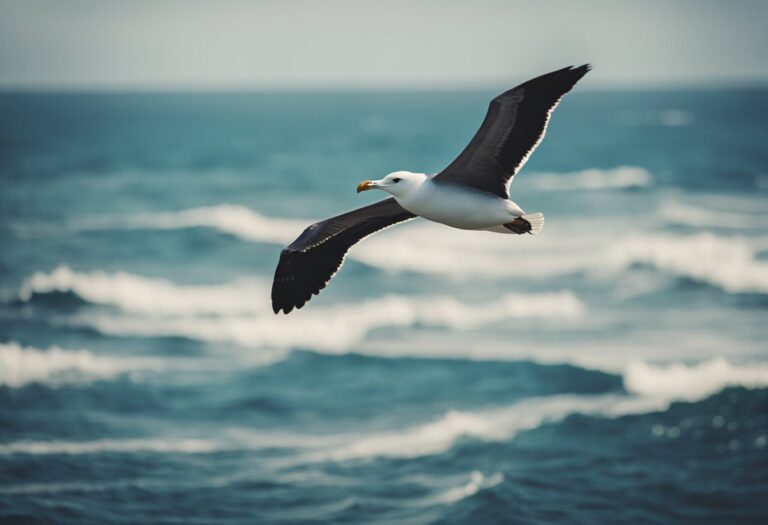Georgia is a paradise for bird with its diverse landscapes providing homes for many species or bird. From my window, I can spot colorful Northern Cardinals, busy Chickadees, and melodious Mockingbirds throughout the year. The most common backyard birds in Georgia include Northern Cardinals, Blue Jays, Carolina Chickadees, American Goldfinches, and Northern Mockingbirds, which serve as the state bird.

Watching these birds brings joy to any morning routine, and identifying them becomes easier once you know what to look for. I’ve noticed that some birds like the Red-bellied Woodpecker visit year-round, while others appear only during certain seasons. Each species has unique characteristics, from the brilliant red of the Cardinal to the acrobatic feeding style of the White-breasted Nuthatch.
Key Takeaways
- Georgia backyards host diverse bird species including the Northern Cardinal, Carolina Chickadee, and the state bird, the Northern Mockingbird.
- Different birds visit during various seasons, with some like the American Goldfinch changing plumage colors throughout the year.
- Creating bird-friendly habitats with appropriate feeders, water sources, and native plants will attract more species to your backyard.
Overview of Georgia’s Avian Diversity

Georgia boasts an impressive variety of bird species. The state is home to approximately 431 backyard bird species, making it a paradise for bird watchers like me.
The diversity is particularly notable in certain regions. For example, the Glynn region alone claims around 359 different bird species, showcasing Georgia’s rich avian population.
According to the New Georgia Encyclopedia, 347 species of birds live in Georgia at some point during their lifetimes. This includes both permanent residents and migratory visitors.
Breeding Patterns
Between 90 and 110 species regularly breed and nest in south Georgia, establishing the region as an important breeding ground.
Bird Classification
The largest order of birds found in Georgia is the Passerines. This group includes nearly half of all bird species and is characterized by shared physical traits and behaviors.
I find Georgia’s varied landscapes—from coastal areas to mountains—create perfect habitats for this remarkable bird diversity. These different environments support a wide range of species adapted to specific ecological niches.
The state’s location along major migration routes also contributes to its rich avian diversity, bringing seasonal visitors throughout the year.
Habitats and Bird Distribution

Georgia’s diverse landscapes support a wide variety of bird habitats, creating unique distribution patterns across the state. Different environments attract specific bird species based on available food, shelter, and nesting opportunities.
Woodlands and Forests
Georgia’s woodlands and forests provide essential habitats for many bird species. In these areas, I often spot the Brown Thrasher, Georgia’s state bird, foraging in leaf litter. These wooded areas support woodpeckers, including the Red-bellied and Downy varieties.
Pine forests in southern Georgia attract Pine Warblers and Brown-headed Nuthatches. These specialized birds depend on specific tree species for food and nesting sites.
The dense understory of deciduous forests provides perfect cover for Wood Thrushes and Hooded Warblers. During spring, these areas come alive with colorful migrants like tanagers and grosbeaks.
Oak trees produce acorns that feed Blue Jays and Wild Turkeys. I’ve observed that mature forests with dead trees (snags) are particularly important as they provide nesting cavities for owls and chickadees.
Suburban and Urban Areas
Suburban and urban environments in Georgia host an impressive variety of birds that have adapted to human presence. Northern Cardinals and Mourning Doves are common sights at backyard feeders in neighborhoods across the state.
Urban parks with mature trees attract American Robins and Cedar Waxwings. These birds benefit from the mix of open spaces and tree cover.
Common Urban/Suburban Birds in Georgia:
- Northern Cardinals
- Carolina Chickadees
- Tufted Titmice
- House Finches
- American Goldfinches
Ornamental berry-producing shrubs in landscaped yards provide important food sources during winter months. I’ve noticed Northern Mockingbirds fiercely defending these resources.
Building ledges and chimneys offer nesting sites for Chimney Swifts and Rock Pigeons in more developed areas.
Wetlands and Water Bodies
Georgia’s wetlands and water bodies host a remarkable diversity of bird species. The Okefenokee Swamp is particularly significant, supporting about 232 different bird species with habitat for 64 nesting varieties.
Wading birds like Great Blue Herons and White Ibis thrive in shallow marshes where they hunt for fish, frogs, and invertebrates.
Coastal areas along Georgia’s Atlantic shore provide critical habitat for migratory shorebirds. These beaches and salt marshes serve as refueling stations during spring and fall migrations.
Freshwater lakes attract diving ducks including Ring-necked Ducks and Buffleheads during winter months. I frequently observe these species on larger bodies of water throughout central Georgia.
Bald Cypress swamps create unique microhabitats for Prothonotary Warblers and Anhinga. These specialized environments combine aquatic resources with tree cover, allowing for diverse feeding strategies.
Identifying Common Backyard Birds
Georgia’s backyards host a variety of bird species year-round. Learning to spot key visual features and recognize behaviors can help you identify these feathered visitors with confidence.
Visual Identification Tips
When identifying backyard birds in Georgia, I focus on several key features. Size comparison is essential – notice if the bird is sparrow-sized, robin-sized, or larger like a crow.
Color patterns matter tremendously. The Northern Cardinal’s bright red plumage makes males unmistakable, while females display reddish highlights with a more brownish body.
Bill shape tells me about feeding habits. The White-breasted Nuthatch has a straight, pointed bill for probing bark, while finches have shorter, conical bills for seeds.
Look for distinctive markings too. Red-bellied Woodpeckers display a red cap and nape with a subtle reddish wash on their belly, while their black-and-white checkered back pattern is striking.
Common Georgia Backyard Birds:
- Northern Cardinal
- Blue Jay
- American Goldfinch
- Red-bellied Woodpecker
- Northern Mockingbird
Behavioral and Vocal Cues
I’ve found that behavior often reveals a bird’s identity when visual clues aren’t clear. Northern Mockingbirds perch prominently and mimic other birds’ songs, often repeating phrases several times.
Flight patterns are telling too. The American Goldfinch has a distinctive undulating flight, rising and falling as it moves through the air.
Feeding behaviors provide strong clues. Downy Woodpeckers climb tree trunks in jerky movements, while chickadees hang acrobatically from branches.
Listening carefully helps tremendously. The Song Sparrow’s complex melody typically begins with three short notes followed by a trill. Blue Jays make harsh “jay-jay” calls that are unmistakable in Georgia backyards.
Time of appearance matters too. Dawn chorus peaks early morning, while certain species like cardinals often feed at dusk from backyard feeders visible from windows.
Year-Round Residents

Georgia is home to several bird species that stay in the state throughout the year. These birds can be spotted at backyard during all seasons, bringing joy and color to local gardens regardless of the weather.
Northern Cardinal
The Northern Cardinal is one of the most recognizable backyard birds in Georgia. With their bright red plumage, males stand out dramatically against winter snow or summer greenery. Females display a more subtle brownish-olive color with red accents.
Cardinals don’t migrate, making them reliable visitors to Georgia through out the year. They prefer seeds, especially black sunflower seeds, and typically feed on the ground or low platform feeders.
These birds are known for their beautiful whistling songs. I often hear their “purty-purty-purty” calls throughout the day, especially during spring mornings.
Cardinals are monogamous and mate for life. You’ll often see pairs feeding together, with the male sometimes feeding seeds directly to the female during courtship displays.
Carolina Chickadee
The Carolina Chickadee is a small but lively year-round resident that brings personality to Georgia backyards. These birds have a distinctive black cap and bib with white cheeks, gray wings, and a light underside.
I’ve noticed chickadees are among the bravest feeder birds, often being the first to return after a disturbance. They prefer black oil sunflower seeds, suet, and peanuts.
Their calls are easily recognizable – a clear “chick-a-dee-dee-dee” that gives them their name. The number of “dees” in their call actually indicates their level of alarm.
Carolina Chickadees are acrobatic feeders, often hanging upside down to reach food. They have remarkable memories and can remember thousands of hiding spots where they’ve stored food for later consumption.
Blue Jay
Blue Jays are striking backyard visitors with their blue, white, and black coloration. Larger than the previous birds mentioned, these intelligent members of the crow family bring both beauty and drama to Georgia feeders.
Their diet includes nuts, seeds, insects, and occasionally eggs or nestlings of other birds. I’ve found they particularly love peanuts, both in and out of the shell, and will sometimes store extras by burying them.
Blue Jays are known for their loud, distinctive “jay-jay” calls, but they can actually produce a wide variety of sounds, including perfect imitations of hawks to scare away other feeder birds.
They’re highly social and often travel in family groups. Blue Jays serve an important ecological role by spreading oak seeds – they can transport acorns up to half a mile from the parent tree.
Seasonal Visitors

Georgia backyard bird feeders become especially exciting during seasonal changes. Some birds only visit at certain times of year, bringing new colors and behaviors to observe from your windows.
Ruby-Throated Hummingbird
The Ruby-Throated Hummingbird is a beloved summer visitor to Georgia backyards. These tiny birds arrive in early April and typically stay until October when they migrate south for winter.
Males display a stunning metallic-red throat patch that flashes brilliantly in sunlight. Females lack this patch but share the bright emerald-green back and white underparts. They’re incredibly small, weighing less than a penny!
I often spot these frequent visitors to backyard bird feeders hovering near nectar feeders or trumpet-shaped flowers. They prefer a sugar-water solution mixed at a 1:4 ratio (1 part sugar to 4 parts water).
Their wings beat 50-80 times per second, creating the characteristic humming sound. To attract them, I recommend planting native flowering plants like bee balm, cardinal flower, or trumpet vine.
Dark-Eyed Junco
Dark-Eyed Juncos are winter specialists in Georgia, typically arriving in October and departing by April. These sparrow-sized birds are easily identified by their slate-gray upper bodies and white bellies.
I recognize them by their distinctive “pink-pink” calls and ground-feeding behavior. They hop rather than walk, scratching at soil to uncover seeds. Juncos prefer millet and sunflower seeds scattered on the ground or low platform feeders.
These birds belong to the sparrow family but stand out with their neat appearance. Females show brownish-gray coloring compared to males’ darker slate. During winter months, I often see them in small flocks of 6-12 birds.
Juncos are part of the group that includes sparrows, finches, and siskins that frequently visit Georgia feeders. They prefer areas with nearby evergreen coverage for protection from predators and harsh weather.
Attracting Birds to Your Garden

Creating a bird-friendly garden requires attention to three essential elements. Birds need proper food sources, safe places to rest and nest, and reliable water access to thrive in your backyard space.
Feeding and Diet Preferences
Different Georgia birds prefer specific types of food. Cardinals, finches, and sparrows are common visitors to Georgia feeders, but each has unique preferences.
I recommend offering a variety of seeds to attract different species:
- Black oil sunflower seeds: Attracts cardinals, chickadees, and titmice
- Nyjer seeds: Perfect for goldfinches
- Millet: Brings in sparrows and doves
- Safflower: Cardinals love these while squirrels avoid them
Native plants that produce berries and seeds can also attract birds naturally. The Brown Thrasher and Northern Mockingbird will visit yards with berry-producing shrubs like dogwood and serviceberry.
Place feeders in different locations and heights to accommodate various species’ feeding habits. I’ve found that some birds prefer feeding near protective cover while others need open areas.
Providing Shelter and Nesting Sites
Birds need places to hide from predators and harsh weather. Shelter is a key ingredient in attracting and keeping birds in your garden.
I suggest planting evergreens like juniper and holly that provide year-round shelter. Dense shrubs offer excellent protection and nesting sites for many species.
Installing birdhouses suited to Georgia’s native species can attract nesting birds like bluebirds, chickadees, and wrens. Each species prefers different house designs and placement heights:
| Bird Species | Entrance Hole Size | Mounting Height |
|---|---|---|
| Bluebird | 1½ inches | 5-10 feet |
| Chickadee | 1⅛ inches | 5-15 feet |
| Wren | 1 inch | 6-10 feet |
Leave some brush piles in quiet corners of your yard. These provide additional shelter and attract insects that birds feed on.
Importance of Water Features
Water attracts birds even when food sources are plentiful elsewhere. Birds need water for drinking and bathing throughout the year, especially during hot Georgia summers.
I recommend installing a birdbath with shallow edges (1-2 inches deep). Place it where birds can easily see approaching predators, preferably near shrubs that offer quick escape routes.
Moving water is particularly attractive to birds. Adding a small solar fountain or dripper to your birdbath will attract additional varieties of birds that might not visit feeders.
During winter, heated birdbaths provide critical water sources when natural options freeze. This can attract birds that don’t typically visit feeders but need fresh water.
Clean your water features regularly to prevent disease transmission. I change my birdbath water every 2-3 days in summer and once weekly in cooler months.
Conservation and Protection Efforts

Georgia’s birds face many challenges, but several initiatives help protect them. These programs focus on preserving habitats and creating bird-friendly spaces that benefit both birds and communities.
Local Conservation Programs
Georgia Partners in Flight is an important bird conservation effort that began in 1990. It was created to address the decline of migratory birds that travel between North and South America. The program brings together scientists, government agencies, and bird enthusiasts to protect birds across Georgia.
Birds Georgia (formerly Atlanta Audubon) works to build places where both birds and people can thrive. I’ve found their advocacy efforts particularly effective in creating greenspaces and parks that serve as important habitats for our backyard birds.
The Wildlife Sanctuary Program recognizes property owners who enhance their land for birds and other wildlife. This certification program encourages better habitat management across the state.
Creating Bird-Friendly Environments
I recommend several actions to make your yard more welcoming for Georgia’s birds:
- Native Plants: Use Georgia native plants that provide natural food sources and shelter
- Feeding Stations: Offer appropriate foods like suet for high-energy nutrition, especially in winter
- Water Sources: Maintain bird baths or small water features, keeping them clean and fresh
- Reduce Pesticides: Limit chemicals that harm birds and their insect food sources
Habitat conservation combined with thoughtful wildlife management is essential for protecting Georgia’s birds. By making small changes to our yards and communities, we can create sanctuaries that help birds thrive despite environmental challenges.
Common Bird Behaviors and Interactions

Georgia backyard birds display fascinating behaviors that reveal their unique personalities and survival strategies. Watching these behaviors can add enjoyment to your bird watching experience and help you understand the avian visitors to your yard.
Feeding Habits
Many Georgia backyard birds have specific food preferences. House Finches tend to be submissive at feeders, even to smaller birds, while species like Northern Cardinals often dominate feeding areas.
Cardinals typically feed on the ground or at platform feeders, preferring sunflower seeds and safflower seeds. I’ve noticed they often wait their turn rather than fighting directly for food.
Carolina Chickadees exhibit “grab and go” behavior, quickly taking a seed and flying to a nearby perch to eat it. This reduces their vulnerability to predators while feeding.
Ruby-throated Hummingbirds are territorial at feeders and may chase away other hummingbirds. They hover while feeding, using their specialized bills to reach nectar.
American Goldfinches prefer thistle seeds and have a unique feeding posture, often hanging upside down to reach seeds other birds can’t access.
Social Dynamics
Georgia’s backyard birds display various social behaviors depending on species and season. Some species form mixed flocks, especially in winter, with Carolina Chickadees often leading these groups.
Northern Cardinals maintain strong pair bonds, with males often feeding females during courtship and nesting. I frequently see them sharing food as part of their bonding ritual.
Many birds use specific calls to communicate different messages:
- Alarm calls (short, sharp sounds) warn of predators
- Contact calls help maintain group cohesion
- Territory calls establish boundaries
Mourning Doves are particularly peaceful at feeders, rarely showing aggression toward other birds. They prefer to feed alongside others without conflict.
During breeding season, territorial behaviors increase dramatically. Males sing to establish territory and attract mates. Georgia hosts between 90-110 breeding bird species in the southern region alone, creating a complex web of interactions.
Birdwatching Tips and Etiquette

Successful birdwatching in Georgia requires both timing and respect for nature. I’ve found that knowing when to watch and how to behave around birds makes the experience more rewarding for everyone.
Best Times for Birdwatching
Early morning offers the best birdwatching opportunities in Georgia, particularly the first few hours after sunrise. This is when most birds are actively feeding and singing. I’ve noticed that dawn chorus typically peaks 30-45 minutes before sunrise.
Another prime time is late afternoon before sunset when many species become active again. Seasonal timing matters too – spring migration (March-May) brings numerous species through Georgia.
Weather affects bird activity significantly. I prefer calm, clear days for optimal viewing. After rain can be especially productive as birds emerge to feed. Winter mornings at feeders can yield impressive numbers of birds seeking food.
For beginners, I recommend Georgia’s birding trails which offer established viewing areas.
Ethical Birdwatching Practices
Respecting birds and their habitats is essential for ethical birdwatching. I always stay on marked trails to avoid disturbing nesting areas or damaging sensitive habitats.
Maintaining proper distance prevents stress to birds. I use binoculars or spotting scopes rather than approaching too closely. This is especially important during breeding season (spring and early summer).
I limit the use of bird calls or recordings to attract birds, as this can disrupt natural behaviors. During nesting season, I’m particularly cautious about playback use.
Proper etiquette extends to other birdwatchers too. I keep noise to a minimum, avoid blocking others’ views, and share interesting sightings.
For those interested in contributing to conservation, participating in citizen science projects like the Great Backyard Bird Count helps monitor bird populations across Georgia.
Documenting Your Observations

Recording what you see at your backyard feeders helps improve your bird identification skills and creates lasting memories of your birdwatching experiences. Documentation provides valuable data about bird behavior and migration patterns in Georgia.
Keeping a Birding Journal
I find that maintaining a simple journal transforms casual bird watching into a rewarding hobby. When I document birds in my Georgia backyard, I include:
- Date and time of observation
- Weather conditions (temperature, cloud cover, precipitation)
- Bird species identified
- Number of individuals seen
- Behaviors observed (feeding, singing, nesting)
Observation journals can be used during bird walks to record field notes about what you see. I prefer using a small notebook with weather-resistant pages since Georgia weather can be unpredictable.
These records help me track seasonal patterns and identify when certain species, like winter finches or summer tanagers, typically appear in my yard.
Photographing Backyard Birds
I’ve found that photography enhances my bird identification abilities while creating beautiful visual records. For beginners, I recommend:
- Start with available equipment – even smartphone cameras can capture decent photos of larger birds
- Position yourself near feeders but remain still and patient
- Focus on good lighting – early morning offers the best natural light
- Use a zoom lens if possible for clearer details of smaller birds
Bird identification apps can help confirm species in your photos. When photographing birds at Georgia feeders, I try to capture distinguishing features like the Northern Cardinal’s crest or the Tufted Titmouse’s gray topknot.
I organize my photos by date and species, creating a visual record that complements my written journal entries.
Frequently Asked Questions

Many Georgia residents have questions about identifying and observing the birds that visit their backyards. These FAQs address common questions about bird identification, species diversity, and helpful resources for bird watchers.
How can I identify the different species of backyard birds found in Georgia?
I recommend learning to identify birds by their distinctive features like size, color patterns, and behavior. Start with the most common species like Northern Cardinals, American Goldfinches, and Carolina Chickadees.
Listen for unique calls and songs, as many birds can be identified by sound alone. The Cornell Lab of Ornithology’s Merlin Bird ID app is excellent for beginners, offering visual and audio identification tools.
Observe feeding habits as they provide important clues. For example, woodpeckers climb tree trunks, while finches prefer seed feeders.
Which species of small birds are commonly observed in Georgia gardens and yards?
Georgia backyards frequently host sparrows, finches, and their allies. Carolina Chickadees, Tufted Titmice, and House Finches are among the most common small visitors.
Carolina Wrens with their upturned tails and loud songs are regular residents year-round. Eastern Bluebirds bring brilliant blue splashes of color, especially if you provide nest boxes.
During winter, Dark-eyed Juncos and White-throated Sparrows join the mix. Hummingbirds, particularly Ruby-throated Hummingbirds, visit during warmer months.
What are the distinguishing characteristics of common Georgia backyard birds?
Northern Cardinals display bright red plumage (males) with distinctive crests and black face masks. American Goldfinches show bright yellow bodies with black wings in summer, fading to olive-brown in winter.
Blue Jays are unmistakable with blue upperparts, white underparts, and bold black necklace markings. They’re also known for their loud, harsh calls.
Carolina Chickadees have black caps and bibs with gray backs and white cheeks. Downy Woodpeckers show black and white patterns with males having a small red patch on the back of their heads.
Where can I find high-quality photos to help with bird identification in Georgia?
I recommend the Georgia Audubon website which provides excellent bird photography resources and identification guides specific to Georgia species.
The Cornell Lab of Ornithology’s All About Birds website offers high-resolution photos showing birds from multiple angles and in various plumages throughout the seasons.
Local nature photography groups on social media often share regional bird photos that are particularly helpful for identifying Georgia’s backyard birds in their natural habitats.
Are there any particularly large backyard bird species native to Georgia?
Yes, Georgia backyards sometimes host several larger bird species. Red-shouldered Hawks and Cooper’s Hawks occasionally visit yards hunting for smaller birds or rodents.
Pileated Woodpeckers, with their distinctive red crests and crow-sized bodies, may visit wooded properties. These impressive woodpeckers are among the largest forest birds in North America.
Wild Turkeys occasionally venture into suburban backyards, especially those bordering wooded areas. Georgia is also home to several owl species that might visit yards with mature trees, including Barred Owls and Great Horned Owls.
Which bird identification guides are recommended for Georgia residents?
I highly recommend “Birds of Georgia Field Guide” by Stan Tekiela, which is organized by color for easy reference and focuses specifically on Georgia birds.
The Sibley Guide to Birds (Eastern Region) provides detailed illustrations showing different plumages and flight patterns. It’s comprehensive while remaining portable enough for field use.
For digital options, the Merlin Bird ID app by Cornell Lab includes a Georgia-specific bird pack. The Georgia Department of Natural Resources website also offers excellent regional identification resources and checklists tailored to Georgia birdwatchers.






